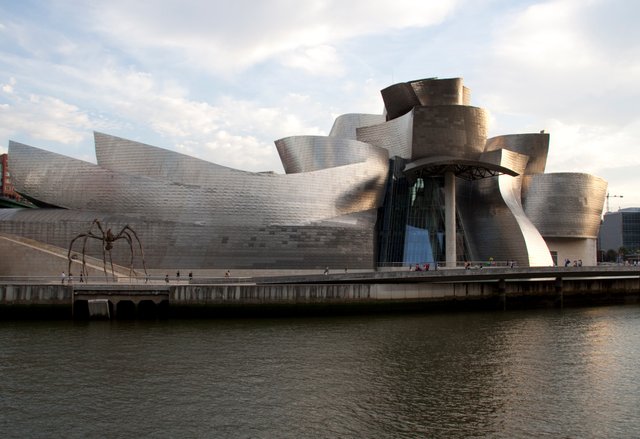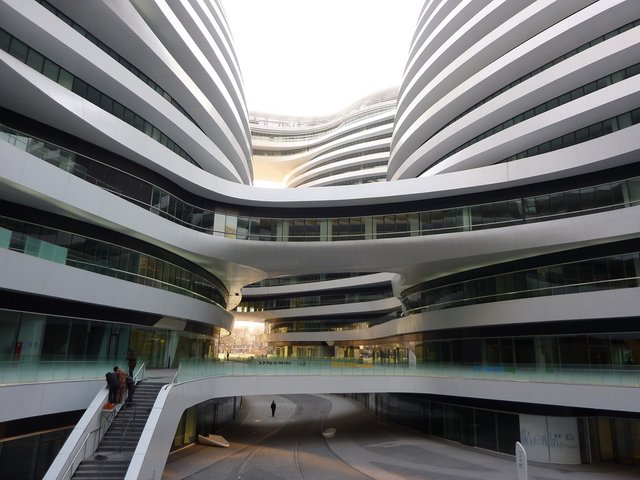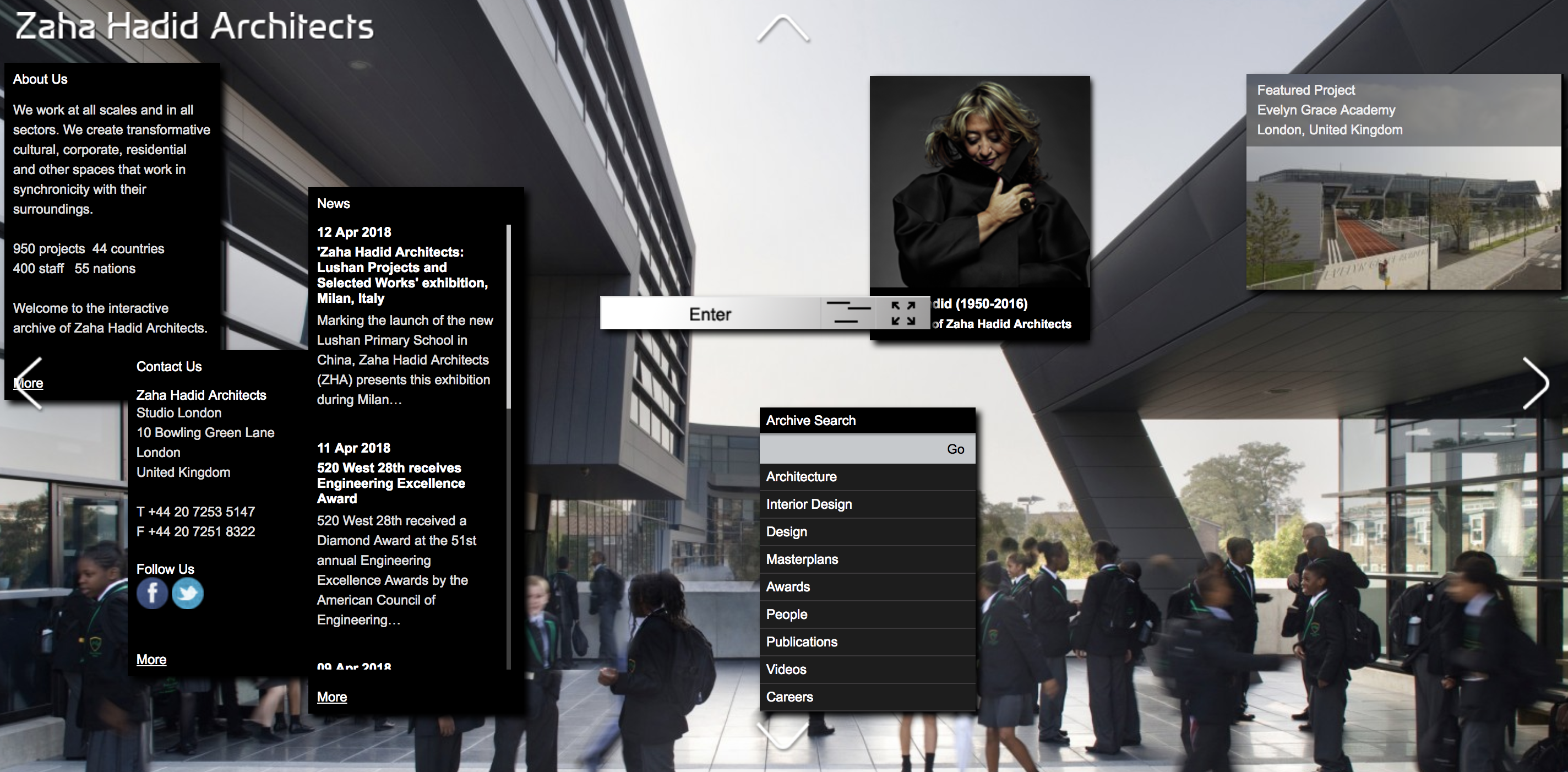What do we do with Dead Designers? A Look at Zaha Hadid Architects

The Creative Spirit
Over the course of the late 90s and early 2000s, the term “Starchitect” emerged to represent the pinnacle of global architectural practice. The most (in)famous example was Pritzker Prize winner Frank Gehry's Guggenheim museum in Bilbao, Spain. The premise and assumption that magnificent design at the architectural scale could motivate a complete urban and economic revolution was solidified in what was called the “Bilbao Effect.” The museum became a shining (literally) example of what impactful design could do in any context and signified the profession's long-awaited treatment as a eminent profession.

Since Gehry's piece de resistance, more and more architects have joined the ranks of global iconicism including Richard Meier, Bjarke Ingels, Steven Holl, Tadao Ando, Renzo Piano, and many others. The term “Starchitect” is used more loosely these days and was originally tied to a very distinct style and type of practice, i.e. the scrunched-up balls of metal that are explicitly signature Gehry. While the term still lingers, it is no longer seen or treated as the monolithic goal of all architectural practitioners and many have strayed from pigeon-holing themselves into a niche style and market proposition. We in the architectural field still need a handful more years (perhaps decades) to truly weigh whether or not that brief trend was helpful to those in the profession.
In the meantime though, a unique time has come where we have to truly revisit the influence of current and past Starchitects. Specifically, I'd like to look into what has happened to Zaha Hadid's stylistic influence since she passed away just over 2 years ago in 2016. She died rather unexpectedly and left behind a robust corporate office with projects lined out the door. Today, her firm Zaha Hadid Architects continues to use her powerful name to brand buildings of their design around the world and shows little sign of slowing down. She is arguably the first of the most iconic Starchitects to pass away (I don't include “stars” that were popular just within the profession nor the ones that are famous by name and not by cohesive aesthetic) and it brings up a few major discussions of what to do with the names of powerful designers in the modern day.

A Creative Memento Mori?

The first significant question is whether or not is appropriate, and if so for how long, for a company to continue practicing under its original principal's name. This is an interesting debate since Hadid left a number of ongoing projects at a momentary standstill in the wake of her passing and of course in those cases, it is likely that the company will need to continue and fulfill their contractual obligations. The next step is also understandable but a bit hazy, when there is an existing long list of clients still waiting to bank on Hadid's design prowess for their personal projects. Arguably, even a Starchitect has relatively little to do with the full design process and a company with employees and years of experience with the master designer would likely do a good job to fulfill waiting clients. Hadid's business partner Patrick Schumacher would likely not leave money on the table.

The last step is most troubling with seemingly no end – when a firm continues to actively seek out clients while using the name of the deceased. Many clients are only interested in the uniqueness of any brand and less so in the personal intervention of any architect. In this case, it would be straightforward to continue to design under Hadid's iconic image and satisfy market demand. It isn't so different from the fact that Apple continues to improve on its computer, phone, music player, and now watch lines without Steve Jobs.
Then again, Apple isn't called “Steve Jobs and Associates.”
At a certain point, an aesthetic will overpower any individual force. This is why we continue to see replicas of of Picassos and Van Goghs. The fact that a style was not properly produced by the originator becomes of little consequence.

I want to go a bit deeper into the contentious legacy that Zaha Hadid left behind but before I do that, I want to get your opinion on this. Even if you're not an architect, how do you think fashion designers should deal with this? Or artist studios where massive numbers of assistants do the work on behalf of Jeff Koons for example? Is there a line that cannot be crossed or a middle-ground that should be strived for?
Let me know your thoughts below!

This really highlight what’s happening in the architectural profession. A young graduate architect like me, faces two career path’s options: whether to pursue with a famous and big firm or a young and small firm.
Being in a famous firm like Zaha, we can meet a lot of top talents with a lot of passion on specific field. In most cases, the work in such firm will be repeatitive as all the work load are distributed to all the staffs. I have friends who shared their experience in famous firm like Foster. From the start until the end, they only handled proposal making and that is all.
On the other hand, a young and small firm has yet to establish such large and stable clientele. Thus, the staffs may need to handle more than technical job and go out to get some business back for the company. The experience could be insufferable to some (like in my case, I’m still enhancing myself to handle those responsibilities). Rather having the luxury to design wildly, a small firm will require a ‘fast and furious’ design as a single staff need to handle the proposal as well as all the client meetings.
There’s pros and cons to work in big and small firm. Nonetheless, I am sure that the experience gained from both are invaluable to further enhance our sense of design.
Talking back to Starchitect, yes, I also wonder why architecture firm tend to use person name? Is it because of the personal ego? Or just a convention that everyone just follow?
An architecture firm that I came across, Snohetta uses the mountain’s name in their hometown as the firm’s brand. I think it is cool to do it as it embraces the spirit of place rather highlighting a very individualistic brand.
What I observed was that in the old time, most of the designers were well off and had higher social status than their assistant or apprentice. Thus, using their name as the brand was a great strategy as they themselves were the brand. As for now, I don’t think any architect could accomplish an avant garde in a solo manner. To nurture a healthy culture, a company name that does not represent a person could achieve better impact and last longer.
A 2 cent of mine for what I had experienced so far :) great to have architects on the platform.
Very cool point on Snohetta, I didn't know that it was named after a local mountain. I suspect the traditional use of personal names is a mix of convention and ego, both of which seem to dominate the profession.
Thanks for the comment @kimzwarch!
Most welcome :) @sndbox is doing the other way round :P
👍👍👍kreatif and inovatif....nice post
멋진 글 잘 읽었습니다!
자하 하디드!!!
이라크 출신 영국 여성 건축가
정말 현대적인 어떤 감성을 불러 일으키는 작품을 많이 남겼지요
자아 하디드의 마지막 유작인
대한민국 DDP동대문 플라자 정말 전세계인의 사랑을 받고 있습니다
아 지난 2016년 3월 31일 돌아가셨지요
어느 남성 건축가 못지않게 멋진 디자인 작품을 많이 남겼지요
우리들의 미래는 바로 여성들의 손에 달려있다고 해도 과언이 아닙니다!!!
ddp 때문에 많이 알려진 건축가이긴 하죠..... ^^ 그리고 진짜 세계적인 유산이 되면 사람이름이 앞에 명명되어도 괜찮을 것으로 여겨집니다.... 개인적으로 가우디의 건축물을 좋아하는데.... 이 분도 여러 도전적인 곡선으로 곡선의 미를 잘 살려내신 분이죠... ^^ 그 판단은 후세의 사람들이 더 잘 할듯 합니다.